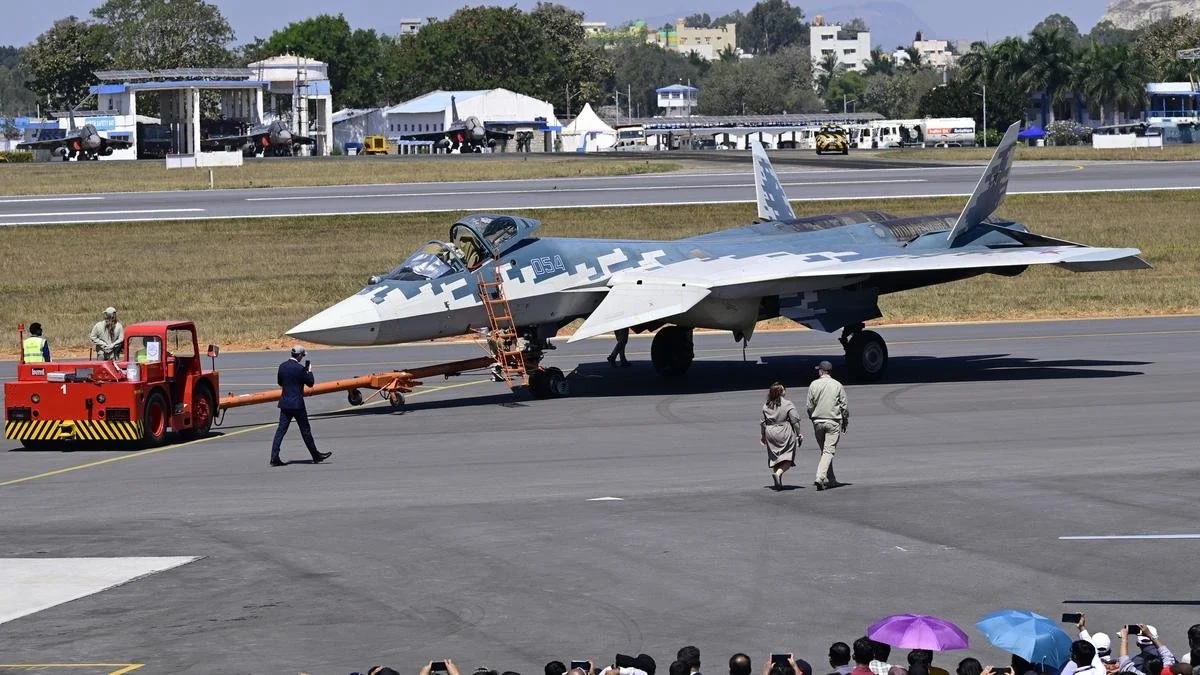India Evaluates Russian Proposal for Domestic Production of Su-57 Stealth Fighters

India is currently assessing a Russian proposal to manufacture the fifth-generation Sukhoi Su-57 stealth fighter jets within its own borders. This initiative, if realized, could significantly enhance India's indigenous fighter production capabilities and further solidify its defense partnership with Russia.
The Su-57: Russia's Premier Stealth Fighter
The Sukhoi Su-57, known by its NATO designation "Felon," represents Russia's most advanced combat aircraft. Designed to compete with Western fifth-generation fighters such as the U.S. F-35 Lightning II and F-22 Raptor, the Su-57 boasts a range of cutting-edge features:
-
Design and Dimensions: The Su-57 features a sleek, twin-engine design optimized for stealth and superior aerodynamic performance. The aircraft measures 20.1 meters in length, with a wingspan of 14.1 meters and a height of 4.6 meters. Its wing area is 78.8 square meters. The empty weight is approximately 18,500 kilograms, with a normal takeoff weight of 26,700 kilograms and a maximum takeoff weight of 35,000 kilograms.
-
Performance: The Su-57 is capable of reaching speeds up to Mach 2.0 and can supercruise at Mach 1.3, allowing it to sustain supersonic flight without afterburners. It has a supersonic range exceeding 1,500 kilometers, more than double that of its predecessor, the Su-27.
-
Armament: The aircraft is equipped with multiple internal weapon bays, housing a variety of air-to-air and air-to-surface missiles, precision-guided bombs, and a 30mm autocannon. This configuration maintains its stealth profile while ensuring multirole versatility.
-
Avionics and Stealth: The Su-57 incorporates advanced sensor systems, including active phased-array radar, and emphasizes supermaneuverability. Its design includes extensive use of composite materials and internal weapon storage to reduce radar cross-section, enhancing its stealth capabilities.
India's Strategic Considerations
India's interest in the Su-57 aligns with its broader defense modernization efforts. The country has previously collaborated with Russia on the Fifth Generation Fighter Aircraft (FGFA) program, which aimed to develop a variant of the Su-57 tailored to Indian requirements. Although the FGFA project was shelved, the current proposal indicates a renewed focus on acquiring advanced stealth capabilities.
Several factors influence India's decision-making process:
-
Geopolitical Dynamics: Deepening defense ties with Russia must be balanced against India's relationships with Western nations, particularly the United States and France. The recent U.S. offer to sell F-35 fighter jets to India adds complexity to the decision.
-
Indigenous Development: India is concurrently advancing its own fifth-generation fighter project, the Advanced Medium Combat Aircraft (AMCA). The potential acquisition of the Su-57 raises questions about resource allocation and the integration of multiple stealth platforms.
-
Operational Integration: Incorporating the Su-57 into the Indian Air Force's diverse fleet—which includes Russian Su-30MKIs, French Rafales, and indigenous Tejas fighters—requires careful logistical and operational planning.
Potential Benefits of Domestic Production
Manufacturing the Su-57 domestically offers several advantages:
-
Technology Transfer: Russia's proposal includes a full transfer of technology, enabling India to develop and maintain the aircraft independently, reducing reliance on external sources.
-
Economic Impact: Local production would stimulate India's defense industry, create jobs, and align with the "Make in India" initiative aimed at boosting domestic manufacturing.
-
Strategic Autonomy: Developing indigenous capabilities enhances national security and reduces vulnerability to international sanctions or supply chain disruptions.
As India evaluates the Russian proposal, it faces a multifaceted decision involving technological, geopolitical, and economic considerations. The outcome will significantly impact the future trajectory of India's air defense capabilities and its position within the global defense landscape.



